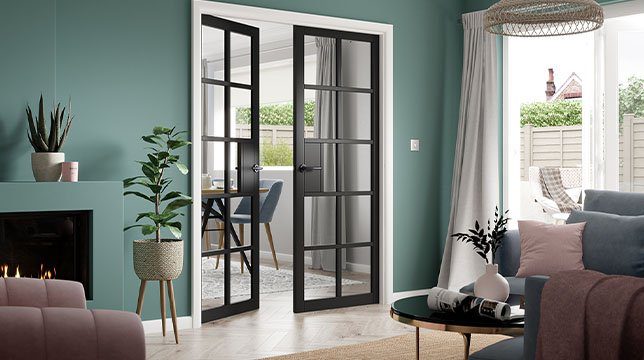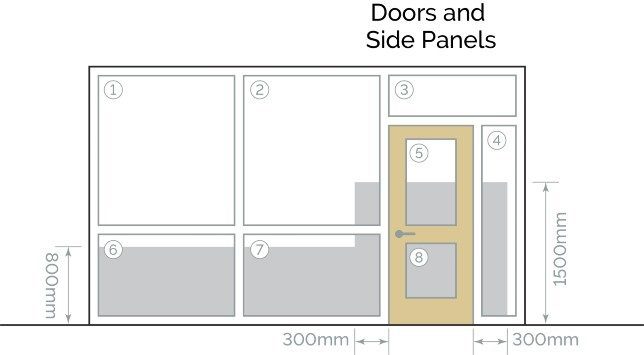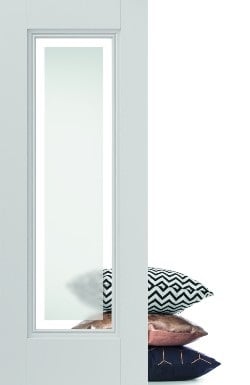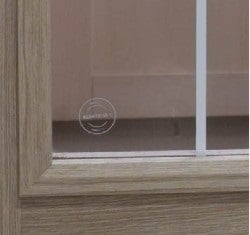Are Internal Glass Doors Safe?

Going for glazed doors in your home’s interior is a very good option for all sorts of reasons. Glass allows light to flood into your space, always welcome in areas which might otherwise be very dark. Beautiful glass doors are also a brilliant way to break up a larger area while maintaining a sense of spaciousness. Conversely, they can also be a useful way to make a smaller space feel bigger, for example, when an opaque glass door is used for a snug bathroom. And, with glass doors often available as pairs, as well as singly, it can be a truly stunning option when it comes to maximising your interiors.
But are they safe? That is the question that many of our customers ask, so we hope this handy blog will provide all the answers you need.
Safety
The straight answer to the question as to whether internal glass doors are safe, is a resounding ‘Yes’! Put your mind at ease with the knowledge that glazing involved in all construction is required to satisfy relevant safety standards.
So how do you know what is needed? The information you want is in ‘Approved Document K’ of the Building Regulations. This is the umbrella document that outlines the requirements.
It is a legal necessity that certain sizes of glass in critical areas, for example, where there is a risk of accidental impact, must be safety glass. This diagram shows where safety glass is obligatory.

Shaded areas show critical locations where safety glass is required (i.e. glazing in areas numbered 2, 4, 5, 6, 7, 8)
Glazed doors at JB Kind
Here at JB Kind, every glazed door we sell has safety glass. If you’re leafing through information from a range of providers, it might be useful to know what other terminology to look out for, that also refers to safety glass.
Other glass safety terms
 Safety glass is also referred to as toughened or tempered. But what do these terms mean?
Safety glass is also referred to as toughened or tempered. But what do these terms mean?
Tempered safety glass has gone through a process where it is heated to more than 600 degrees, and then rapidly cooled. The procedure has a toughening effect on the glass. It means that should the glass break, it will granulate rather than breaking into dangerous shards.
Laminated glass is a sandwich of two pieces of glass between which an interlayer film is placed. In the event of the glass breaking, the pieces will stick to the film. This is a more expensive option but achieves the same end. Laminated glass is also often used for fire glass, where the interlayer can also act as an intumescent.
Annealed glass is the term for ‘standard glass’. Much cheaper than treated glass, it can be found in things like photo frames.
Safety marks
 Glass that is fit for purpose should always be permanently marked. Each mark is individual to the company that last worked on the glass and is etched onto each individual pane.
Glass that is fit for purpose should always be permanently marked. Each mark is individual to the company that last worked on the glass and is etched onto each individual pane.
This gives the user confidence and also enables building control officials to sign the glass products off. Some people find the marks on the glass a problem when it comes to aesthetics – but they are very important. It is the only way that industry experts can be assured that the glass is fit for its use. After all, safety is always the most important thing.